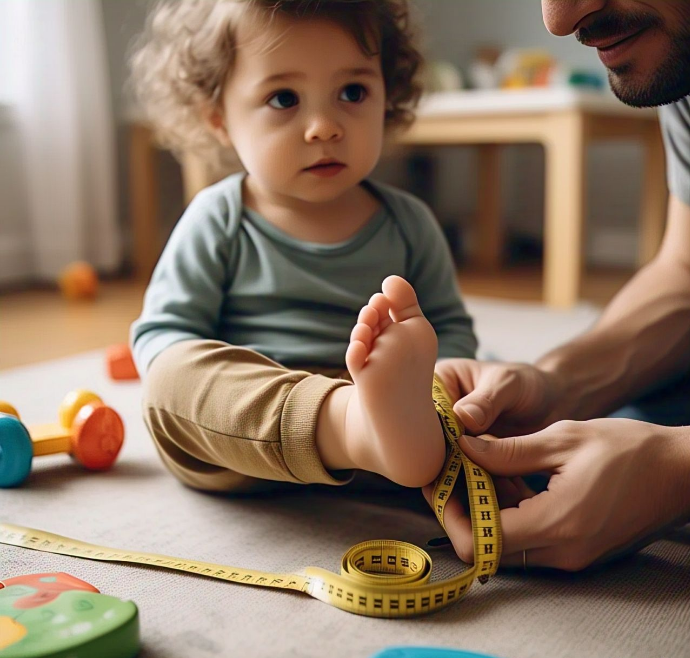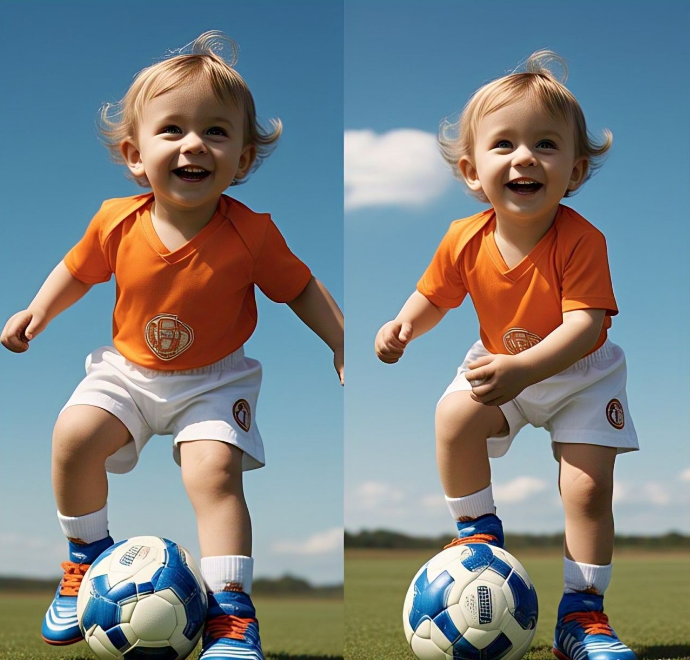Toddler Soccer Cleats are important for kids who love to run, kick, and play soccer. The right cleats help little feet stay comfortable and safe while having fun on the field. If your child is starting soccer, you might wonder—do they really need cleats, or will regular sneakers work?
Choosing the best toddler soccer cleats is all about comfort, fit, and safety. Not all toddlers need cleats right away, but if your child plays on grass or joins a team, cleats can improve grip and balance. In this guide, we’ll help you pick the perfect pair, avoid common mistakes, and make sure your little player enjoys the game with happy feet!
Contents
- 1 Do Toddlers Really Need Soccer Cleats? The Right Time to Buy
- 2 How to Pick the Best Toddler Soccer Cleats for Comfort & Safety
- 3 Choosing the Right Toddler Soccer Cleats for Different Playing Surfaces
- 4 Velcro or Lace-Up Toddler Soccer Cleats: Which One to Choose?
- 5 How to Measure Toddler Feet for the Perfect Cleat Fit
- 6 Best Toddler Soccer Cleats for Wide, Narrow & High-Arch Feet
- 7 Must-Have Features in Toddler Soccer Cleats
- 8 How to Break in New Toddler Soccer Cleats Without Hurting Tiny Feet
- 9 Caring for Toddler Soccer Cleats: Keep Them Clean & Lasting Longer
- 10 Conclusion
- 11 FAQs
Do Toddlers Really Need Soccer Cleats? The Right Time to Buy
Not all toddlers need soccer cleats right away. If your child is just starting to play, regular sneakers might be enough. Cleats become important when they start playing on grass fields or join a soccer team. They help with grip, balance, and overall safety.
Sneakers are comfortable and easy to wear. However, they don’t provide the same traction as cleats, especially on wet or grassy surfaces. If your toddler slips often while running, it may be time to switch to cleats.
Age and experience also matter. If your child can walk and run without losing balance, they might be ready. Most kids under five can play well in sneakers, but once they start playing in leagues, cleats are a better choice.
Always check with the coach before buying. Some beginner leagues allow sneakers, while others require cleats. It’s best to know the rules before making a purchase.
How to Pick the Best Toddler Soccer Cleats for Comfort & Safety
The best cleats should be comfortable and supportive. A toddler’s feet are soft and growing, so choosing the right pair helps avoid pain or injuries. Cleats that are too tight can cause blisters, while loose ones may cause trips and falls.
Soft and flexible materials are the best choice. Hard cleats can hurt small feet, making it harder for toddlers to move freely. Lightweight designs also help, keeping their feet from getting tired during play.
Safety is a big concern. Look for cleats with a strong grip to prevent slipping. Padding around the ankles adds extra comfort and protection. A cushioned insole can also help keep little feet comfortable for longer periods.
Before buying, measure your child’s feet properly. Sizes vary between brands, so always check the size chart. It’s best to leave a little room for growth, but not too much to affect stability.
Choosing the Right Toddler Soccer Cleats for Different Playing Surfaces
The type of field your child plays on affects the kind of cleats they need. Soccer is played on different surfaces, and picking the right cleats helps with performance and safety.
Grass fields need cleats with strong traction. They help prevent slipping, especially on wet days. For firm ground, cleats with short rubber studs work best.
Artificial turf requires special cleats. Regular soccer cleats may not work well on turf, so look for shoes labeled for artificial grass. These cleats have smaller rubber studs that offer better grip.
Indoor soccer is different. If your toddler plays on a gym floor, they need indoor soccer shoes. These have flat, non-marking soles that provide grip without damaging the floor.
Velcro or Lace-Up Toddler Soccer Cleats: Which One to Choose?
Picking between Velcro and lace-up cleats depends on your toddler’s age and ability. Both have their benefits, but one may be better for your child.
Velcro cleats are best for younger kids. They are easy to put on and take off without needing help. Velcro also provides a snug fit, reducing the chances of tripping over untied laces.
Lace-up cleats offer better support. They are ideal for older toddlers who can tie their own shoes or have parents who can secure them tightly. Laces allow for a customized fit, making them great for kids with different foot shapes.
If your child struggles with laces, Velcro is the way to go. Once they grow older and more independent, they can switch to lace-up cleats for extra support.
How to Measure Toddler Feet for the Perfect Cleat Fit

Getting the right size is important for comfort and performance. Cleats that are too tight can cause pain, while loose ones may affect movement. Measuring your child’s feet before buying is the best way to ensure a perfect fit.
Follow these steps to measure at home:
- Place their foot on a piece of paper – Make sure they stand straight.
- Trace the outline – Use a pencil to draw around their foot.
- Measure from heel to toe – Use a ruler for an accurate size.
- Check the width – Measure the widest part of their foot.
- Compare with a size chart – Each brand may have different sizing.
Always leave a little room for growth, but not too much. A small gap allows for movement, while an oversized cleat can cause instability.
Best Toddler Soccer Cleats for Wide, Narrow & High-Arch Feet
Every toddler has a unique foot shape. Some have wide feet, while others have narrow or high-arched feet. Finding the right cleats ensures comfort and prevents foot pain.
Wide-footed toddlers need cleats with extra space. Look for brands that offer wide-width options to prevent squeezing. Soft materials also help with flexibility.
Narrow feet require snug-fitting cleats. If the shoes are too wide, they may slip off while running. Lace-up cleats can help adjust the fit better than Velcro.
For high arches, extra cushioning is needed. A well-padded insole provides comfort and support, preventing foot strain during play.
Must-Have Features in Toddler Soccer Cleats
The best cleats have features that improve comfort, performance, and safety. Parents should check these before buying.
- Soft and flexible material – Helps little feet move freely.
- Good grip on the sole – Prevents slipping on the field.
- Lightweight design – Reduces foot fatigue for longer play.
- Easy to put on – Velcro or simple laces make them hassle-free.
- Proper sizing – A little room for growth but not too loose.
Choosing cleats with these features ensures your toddler enjoys soccer safely and comfortably.
How to Break in New Toddler Soccer Cleats Without Hurting Tiny Feet
New cleats can feel stiff at first, but breaking them in makes them more comfortable. Here are some simple ways to do it:
Breaking in Tips:
- Wear them indoors – Let your child walk around the house in them.
- Use thick socks – Helps stretch the cleats slightly for a better fit.
- Bend and twist the cleats – Softens stiff areas for easier movement.
- Apply slight moisture – Damp socks can help soften tough spots.
Breaking in cleats properly prevents blisters and discomfort, making soccer more enjoyable.
Caring for Toddler Soccer Cleats: Keep Them Clean & Lasting Longer

Proper care helps cleats last longer and stay comfortable. Dirt, sweat, and moisture can wear them out faster.
Cleaning & Maintenance Tips:
- Wipe off dirt – Use a damp cloth after every game.
- Air dry properly – Avoid direct heat to prevent material damage.
- Check for wear and tear – Replace cleats when the grip is worn out.
- Store in a cool, dry place – Prevents cracking and stiffness.
Keeping cleats clean and in good condition ensures they remain safe and effective for play.
Conclusion
Choosing the right toddler soccer cleats is important for your child’s comfort and safety. The right pair helps them run, kick, and play without slipping or hurting their feet. If your toddler is just starting soccer, sneakers may work, but cleats are better for grassy fields and league games. Always pick cleats that fit well, feel comfortable, and match your child’s needs.
A good pair of cleats helps your little one enjoy soccer and play with confidence. Make sure to measure their feet before buying, break in new cleats slowly, and keep them clean for longer use. With the right cleats, your toddler can have fun, stay safe, and improve their skills on the field!
FAQs
Q: When should my toddler start wearing soccer cleats?
A: If your child plays on grass fields or in a soccer league, they may need cleats. Most toddlers under five can play in sneakers, but cleats help with grip and balance on slippery surfaces.
Q: How do I know if the cleats fit my toddler properly?
A: The cleats should fit snugly but not be too tight. There should be a little space for toe movement, but not too much. Always measure your child’s feet before buying.
Q: Are Velcro or lace-up cleats better for toddlers?
A: Velcro cleats are easier for younger kids to put on and take off. Lace-up cleats provide a tighter fit but may be tricky for toddlers who can’t tie their shoes yet.
Q: How can I help my toddler break in new soccer cleats?
A: Let them wear the cleats indoors for short periods, use thick socks, and gently bend the shoes to make them softer. This helps prevent blisters and discomfort.
Q: How do I clean toddler soccer cleats?
A: Wipe off dirt with a damp cloth after each game, air dry them, and store them in a cool, dry place. Avoid using direct heat, as it can damage the material.
